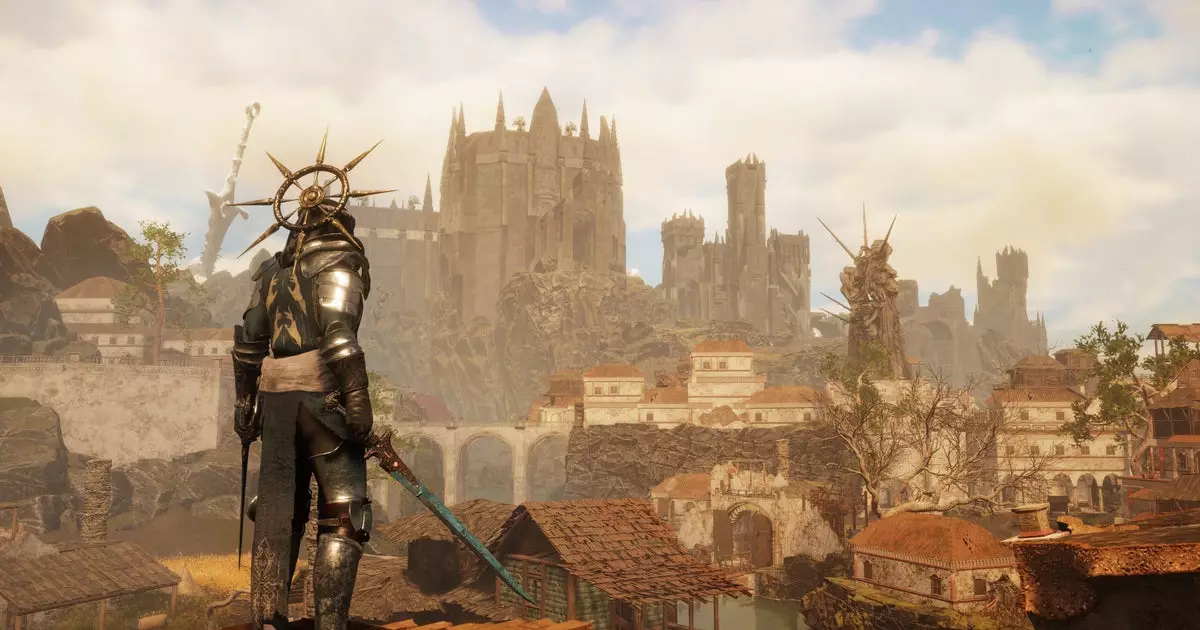For gamers seeking alternatives to Microsoft-backed titles, the burgeoning fantasy landscape of independent game development has much to offer. One shining example is *Tainted Grail: The Fall of Avalon*, an open world RPG that has quickly captured the attention of players and critics alike. As it transitions from early access into a full release, the game boasts an overwhelmingly positive reception from its user base on Steam, hinting at the rich experiences that await those who dare to explore its dark reimagination of Arthurian legend. In a time when mainstream titles often dominate the discourse, it’s refreshing to witness an indie game garnering such acclaim.
A Dark and Enigmatic Setting
Set approximately 600 years after the legendary King Arthur’s reign, *The Fall of Avalon* presents a world steeped in strife and despair. The game’s realm is divided into three distinct zones rife with conflict and chaos, echoing a post-apocalyptic narrative. Factors like disease and the mysterious “Wyrdness,” a primordial force that intensifies at night, create an environment where survival is a constant battle. This unique mechanic adds both tension and excitement, transforming players’ nighttime adventures into harrowing quests against increasingly formidable foes.
What sets this game apart from many others in its genre is its focus on a rather grim aesthetic, drawing parallels to the beauty and terror within nature’s cycle of decay. The haunting visuals, coupled with the encroaching plague dubbed the “Red Death,” invite players into a narrative layered with complexity and intrigue. It’s not merely about conquering foes; instead, it’s about navigating a world where moral ambiguity compels you to make tough decisions.
Endless Opportunities for Exploration
Another boon for players is the sheer volume of content within *The Fall of Avalon*. Spanning 50 to 70 hours of gameplay, with more than 200 side quests, the game invites players to immerse themselves fully. Whether you’re decorating your own home, farming, or practicing sketchbook journaling—described as a quirky and artistic mechanic—there’s a sense of freedom that permeates the game. The developers seem to have harnessed the idea that creativity flourishes in the darkest of times. This allows players to carve out their unique path amidst the chaos, a significant draw for those who cherish exploration and player autonomy.
Moreover, the ability to choose from myriad playstyles adds a layer of customization that is frequently touted but not always delivered in RPGs. Whether you aspire to be a spell-slinging mage or a stealthy assassin lurking in the shadows, the game’s mechanics support your wildest fantasies. The promise of crafting an “omni-capable RPG everyperson” who can manipulate stats and perks to suit their playstyle further enhances the allure of the game. This flexibility could prove pivotal in creating memorable players’ experiences.
Artistry and Atmosphere
The visual direction of *The Fall of Avalon* is particularly commendable, driven by a thematic underpinning of “everlasting autumn.” This artistic choice contributes significantly to the overall atmosphere. A world perpetually shrouded in autumnal hues captures both beauty and decay, resonating through the character designs and environmental storytelling. It’s a reminder of the cyclical nature of life—an aesthetic that can simultaneously evoke joy and sorrow.
However, while the game flaunts a remarkable art direction, the underlying story, described as “mature” and “morally grey,” raises eyebrows. Such descriptors can often come off as cliché, hinting at a narrative depth that may not be as profound as intended. Players might approach the storyline with caution, questioning the originality behind yet another tale of moral complexity set against a dark backdrop.
In the end, *Tainted Grail: The Fall of Avalon* promises a tapestry woven with rich narratives and haunting visuals. The gaming community stands on the precipice of something remarkable, and it’s time to dive headfirst into the darkly enchanting depths of Avalon where heroes may rise, but the shadows are ever present.

